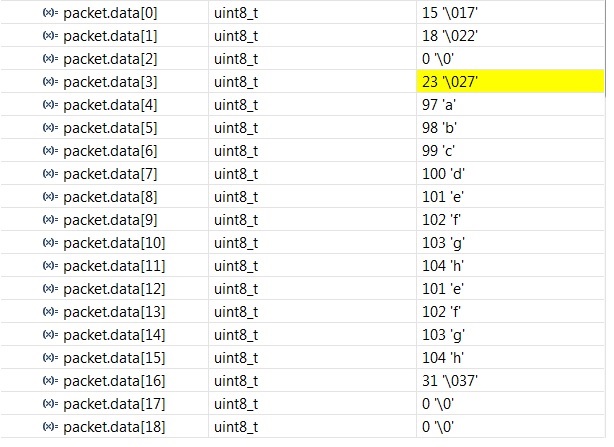Hi,
I am using CC110L for a project and I have few questions about it. After going through datasheet and forum, the process of using it is resetting it first (using SRES) then write configuration registers to complete the initialization.
So,1) when writing the configuration registers, should Csn be low for one config reg (for both address and data) and go high. Then for another config register it goes low again and back high.
2) For every config register, what should we get on the MISO ? For example, if writing to IOCFG2 , address is 0x00 and data is say 0x06, so the format is-
Csn goes low,
MOSI-Write 0x00,0x06
MISO-? What should we get here?
Csn goes high.
3) It says in the datasheet that "Registers with consecutive addresses can be accessed in an efficient way by setting the burst bit (B) in
the header byte". So, config registers have consecutive address, we can use burst access here. So, what is the correct procedure for that? For example, IOCF2 address is 0x00 and data value is 0x06 and IOCFG1 is0x01 and data value is 0x07 and so on. So, if we set the burst access to one, will the format be -
Csn low.
MOSI-0x40, 0x06, 0x07 and so on.
MISO-??(What will be here?)
Csn high.
Kindly tell if this is the correct way.
Thanks,
Navneet


